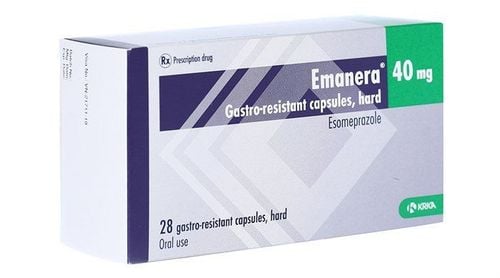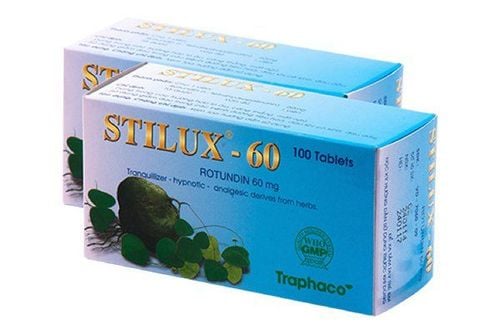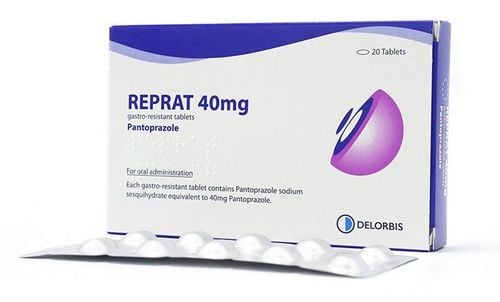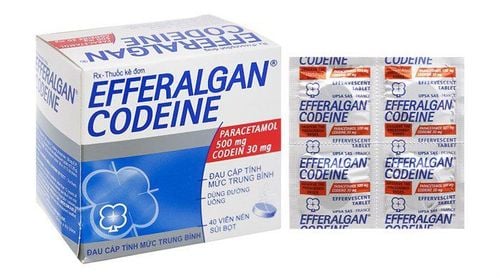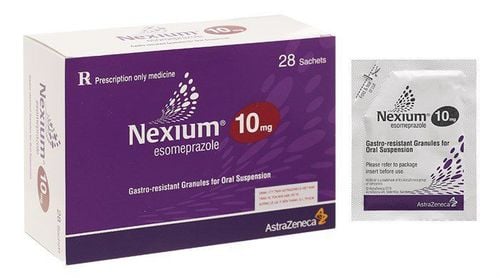The main ingredient of Suprazole is Pantoprazole Sodium Sesquihydrate, which belongs to the Proton Pump Inhibitor (PPI) class of medications. Suprazole is commonly used in the treatment and prevention of gastric and duodenal ulcers, gastroesophageal reflux disease (GERD), H. pylori infections, and more. Learning basic information about the ingredients, uses, dosage, and side effects of Suprazole will help patients improve treatment effectiveness.
1. What is Suprazole?
Suprazole is prepared in the form of enteric-coated tablets, with the main ingredients including:
- Active ingredient: Pantoprazole (as Pantoprazole Sodium Sesquihydrate) content of 40 mg.
- Excipients: Just enough for 1 tablet.
Mechanism of action:
Pantoprazole Sodium Sesquihydrate is a derivative of Benzimidazole that selectively inhibits the proton pump, so this compound also belongs to the group of selective proton pump inhibitors (PPI). The mechanism of action of Pantoprazole Sodium Sesquihydrate is to block the final step of gastric acid secretion through the formation of a covalent bond at 2 sites of the H+, K+-ATPase system on the surface of the gastric parietal cells. This effect of Pantoprazole is dose-related and leads to inhibition of basal gastric acid secretion and also when stimulated by any other agent. The binding of Pantoprazole to H+, K+, and ATPase causes an antisecretory effect lasting more than 24 hours.
2. Indications of Suprazole
Suprazole is indicated for the treatment of the following conditions:
- Active benign peptic ulcers.
- Used in combination with Amoxicillin and Clarithromycin for the treatment of Helicobacter pylori infection.
- Symptomatic treatment of gastroesophageal reflux disease (GERD).
- Zollinger-Ellison syndrome.
- Prevention of gastric and duodenal ulcers caused by non-steroidal anti-inflammatory drugs (NSAIDs).
3. Contraindications of Suprazole
- Hypersensitivity or allergy to any ingredient of Suprazole.
- A history of allergy to medications containing Pantoprazole Sodium Sesquihydrate.
- Hypersensitivity to other proton pump inhibitors (PPI).
- Pregnant or breastfeeding women.
4. Dosage and how to use Suprazole
Note: Take Suprazole in the morning and 30 - 60 minutes before meals.
Dosage:
*Adults and children ≥ 12 years old:
- Active benign gastric ulcer: Take 1 tablet (40mg)/time in the morning. Treatment duration is from 4 - 8 weeks.
- Active benign duodenal ulcer: Take 1 tablet (40mg)/time in the morning. Treatment duration is from 2 - 4 weeks.
- Symptomatic treatment of gastroesophageal reflux disease (GERD): Take 1 tablet (40mg)/time per day for 4 to 8 weeks.
- Zollinger - Ellison syndrome: Initial dose is 2 tablets (80mg)/time per day, then can be increased to 3 tablets (120 mg)/time x 2 times/day. The maximum dose for the elderly in one day is 40 mg.
- Treatment of H. Pylori infection: Use the regimen of Pantoprazole Sodium (Suprazole) orally 1 tablet (40 mg)/time x 2 times/day + Amoxicillin 1 g or Metronidazole 400 mg x 2 times/day + Clarithromycin 500 mg x 2 times/day, treatment for 7 days. Do not change the dose of Suprazole in the treatment regimen to eradicate H. pylori in elderly patients or patients with impaired liver and kidney function.
*Children < 12 years old:
- Suprazole is not recommended because clinical safety has not been guaranteed.
5. Precautions when using Suprazole
Treatment with high or prolonged doses of Suprazole may cause side effects such as:
Common:
- Systemic symptoms: dizziness, lightheadedness, headache, fatigue.
- Skin and soft tissues: rash, hives.
- Gastrointestinal disturbances: dry mouth, vomiting, nausea, abdominal pain, bloating, constipation, or diarrhea.
- Musculoskeletal symptoms:Muscle pain, joint pain, joint stiffness.
Less common:
- Systemic symptoms: general weakness, dizziness, lightheadedness, insomnia.
- Skin and soft tissues: itching.
- Liver function: elevated liver enzymes.
Rare:
- Systemic symptoms: excessive sweating, discomfort, peripheral edema, anaphylactic shock.
- Skin and soft tissues: maculopapular rash, hair loss, exfoliative dermatitis, acne, angioedema, erythema multiforme.
- Gastrointestinal disturbances: stomatitis, belching, acid reflux.
- Discontinue Suprazole if any of these symptoms or any unusual signs are observed, and inform your doctor about the use of Suprazole. Seek immediate medical attention for proper handling.
Precautions for use:
- Before using Suprazole, any malignant gastrointestinal conditions, such as stomach cancer, should be ruled out, as Suprazole may mask symptoms or delay cancer diagnosis.
- Use Suprazole with caution in patients with severe liver dysfunction, cirrhosis, kidney disease, and the elderly.
- Pregnant women: According to the U.S. Food and Drug Administration (FDA), there is insufficient evidence of the safety of Suprazole during pregnancy. Therefore, it is contraindicated for pregnant women or those planning to become pregnant.
Breastfeeding women: Currently, there is no data indicating whether Pantoprazole Sodium Sesquihydrate in Suprazole is excreted in breast milk. To ensure safety for breastfeeding infants, Suprazole is contraindicated in this group. - Drivers and machine operators: Suprazole may cause side effects such as dizziness, lightheadedness, and insomnia, which may affect work performance. Therefore, it is advised to avoid using Suprazole before and during work activities.
6. Drug interactions Suprazole
Interactions with other drugs:
- Suprazole reduces the absorption of antifungal drugs such as Ketoconazole, Posaconazole, or Itraconazole.
- Avoid using Suprazole at the same time as drugs such as Erlotinib, Posaconazole, Delavirdin, and Nelfinavir.
- Suprazole reduces the concentration and effect of:
- Atanazavir.
- Clopidogrel.
- Dabigatran.
- Etexilat.
- Dasatinib.
- Erlotinib.
- Indinavir.
- Iron salts.
- Mesalamine.
- Mycophenolate.
- Nelfinavir.
- Suprazole increases the concentration and effect of:
- CYP2C19, CYP2C8 substrates.
- Methotrexate.
- Saquinavir.
- Voriconazole.
The above is general information about the ingredients, indications, contraindications, dosage, and notes when using Suprazole. To achieve the highest treatment efficiency for themselves and their families, patients should carefully read the instructions for the use of Suprazole and consult their doctor or pharmacist before deciding to use it.
To arrange an appointment, please call HOTLINE or make your reservation directly HERE. You may also download the MyVinmec app to schedule appointments faster and manage your reservations more conveniently.

